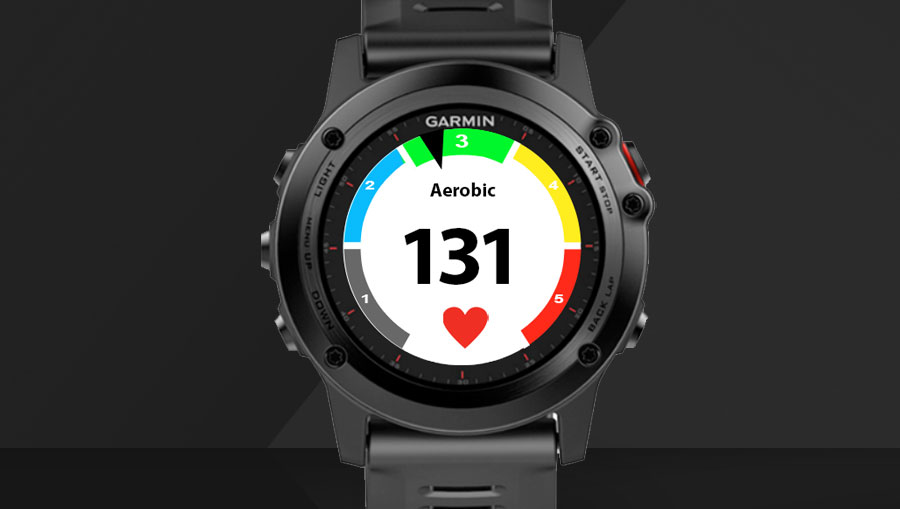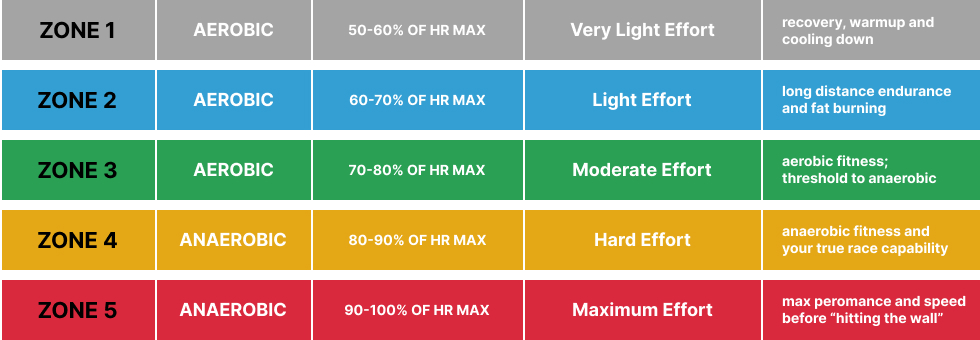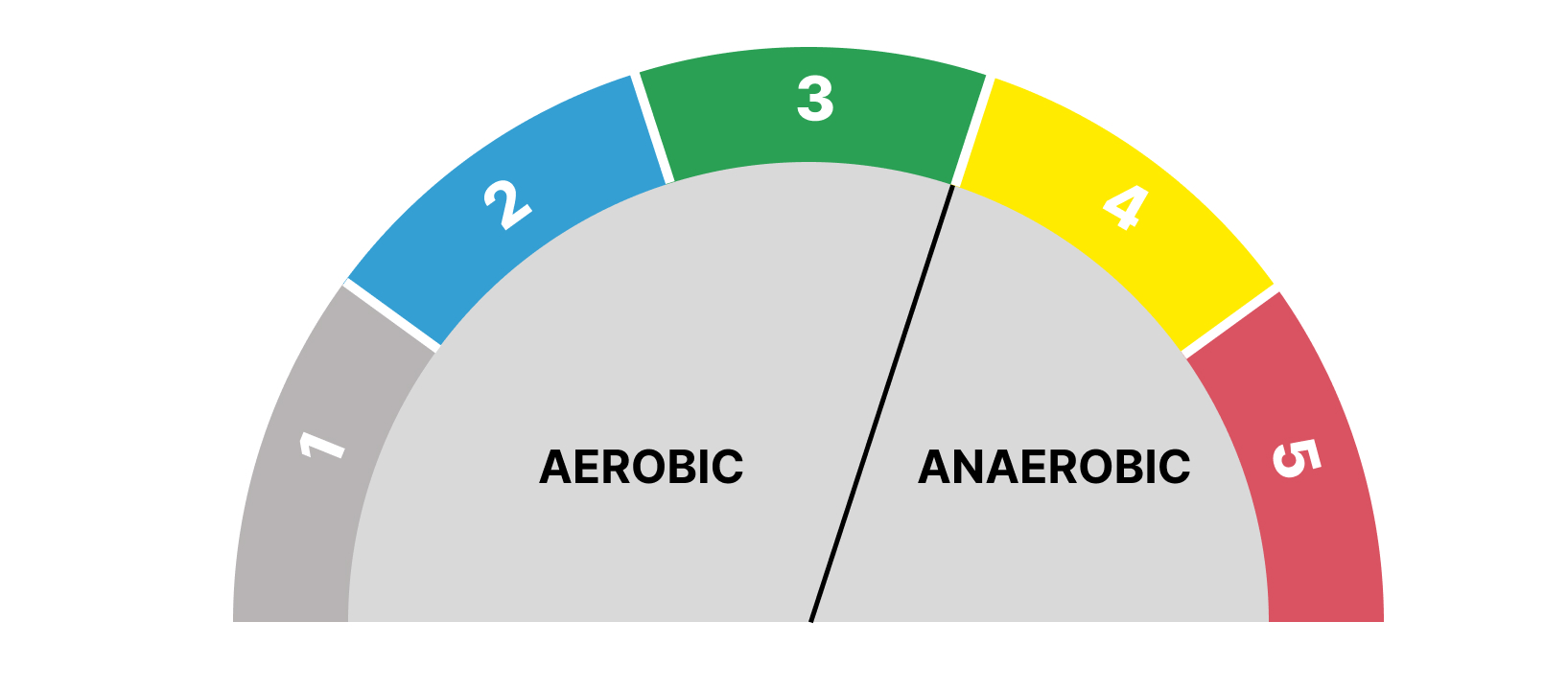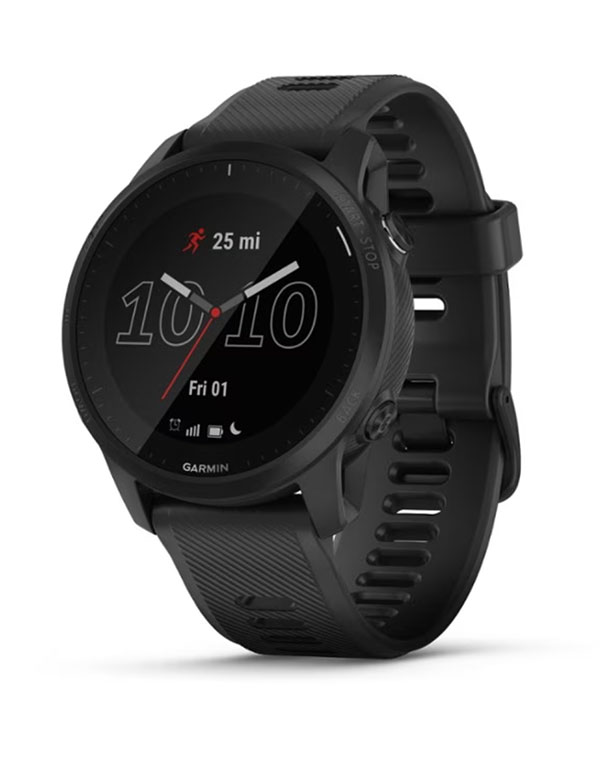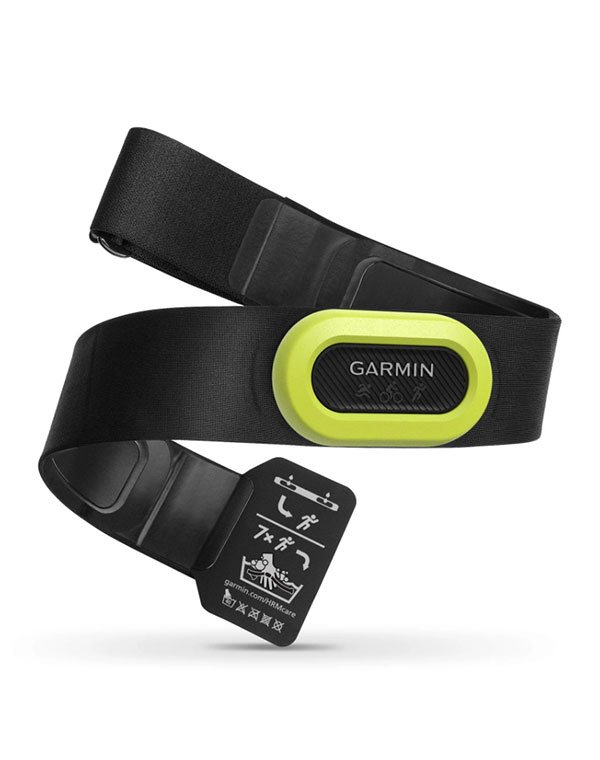Why Data Matters
The forms of data you’ll be exploring at Full Throttle may be entirely new to you. We engage terminology and concepts that are important to learn, like aerobic vs. anaerobic, zones, and thresholds. The way to think about your data overall is that any data parameters we have will help us develop you better as an athlete and faster toward reaching your goals. One quick example of how your data makes a difference – every five pounds you lose in weight is worth 15 additional seconds off your /mile speed in running (every pound is worth 3 seconds per mile). In an Olympic distance race, that could be more than 1m 30s faster, it’s all about efficiency.
The 5 Training Zones
Training at the correct intensity for the right amount of time (Heart Rate Training) is one of the most important, but also one of the most commonly misunderstood, aspects of training for ANY sport.
Your knowledge of the 5 Training Zones is foundational to understanding what your training intensity is during any workout and making adjustments.
The below diagrams are visualizations of the 5 Training Zones. Don’t just read them, learn them. Commit them to memory.
Aerobic vs. Anaerobic
Aerobic Training Zones –
Aerobic training (Zones 1-3) is any activity that can be maintained continuously (think easy running). On the top end (Zone 3), it usually is below 80% of your maximum heart rate. Training for any sport in your aerobic zone builds your endurance (as though you could go for an extended period of time).
In the aerobic zones, your body uses oxygen to power your muscles and taps into burning fat and carbohydrates as your fuel source.
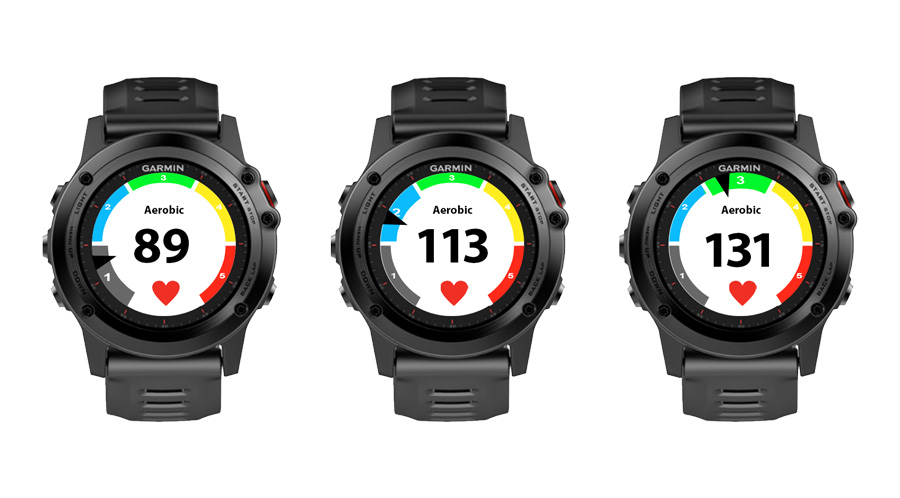
Anaerobic Training Zones –
Anaerobic training (Zones 4-5) is what happens when you kick the intensity up a few gears. It is intense physical activity of a very short duration. Put simply, you are not in your comfort zone and you are reaching activities you can’t sustain for very long. It is usually above 80% of your maximum heart rate for short-course racing.
In the anaerobic zones, your primary fuel source is glucose (glycogen) in your muscles and your glycogen reserves are used up very fast (regardless of how much pasta you ate the night before). When you train or race in your anaerobic zones, know that when you run out of glycogen you will “hit the wall”.
Your anaerobic zones are also where lactic acid starts to build up in your muscles. At a certain point, this build-up will hit critical mass and simply stop you from pushing your muscles further (and slow you down or stop you completely).
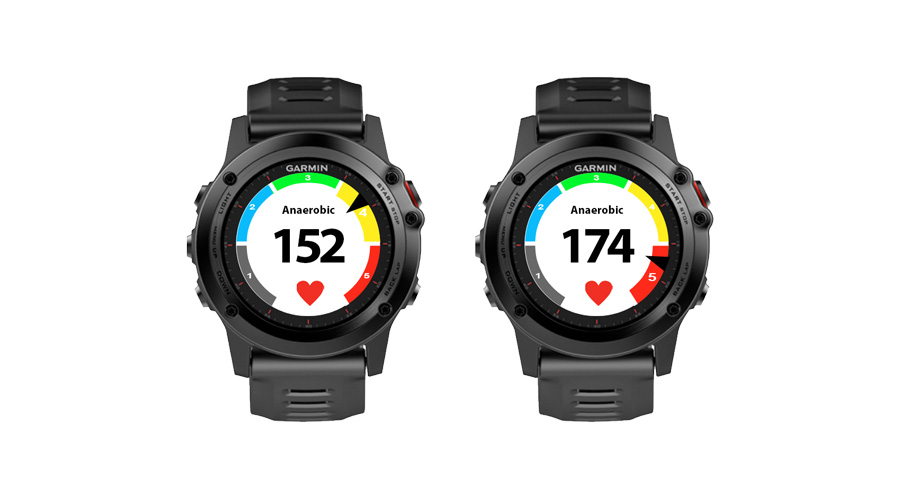
How To Approximate Your Aerobic/Anaerobic Threshold –
Your Aerobic/Anaerobic Threshold heart rate is what divides these two states. As your performance gets better, your threshold heart rate doesn’t really change, but your performance output at those heart rates will have improved.
If you have never tested your Max Aerobic Function (MAF) or simply can’t remember what it is, start with an approximate value of take 180 and subtract your age.
For example, if you are 40 years old, then your approximate MAF heart rate is: 180-40 = 140 bpm.
In training, a performance watch and heart rate monitor will help you see in real-time what your heart is, and you will know if you are training in your Aerobic or Anaerobic zones. The key to improving your aerobic capacity (otherwise known as base) is to train just AT your MAF.
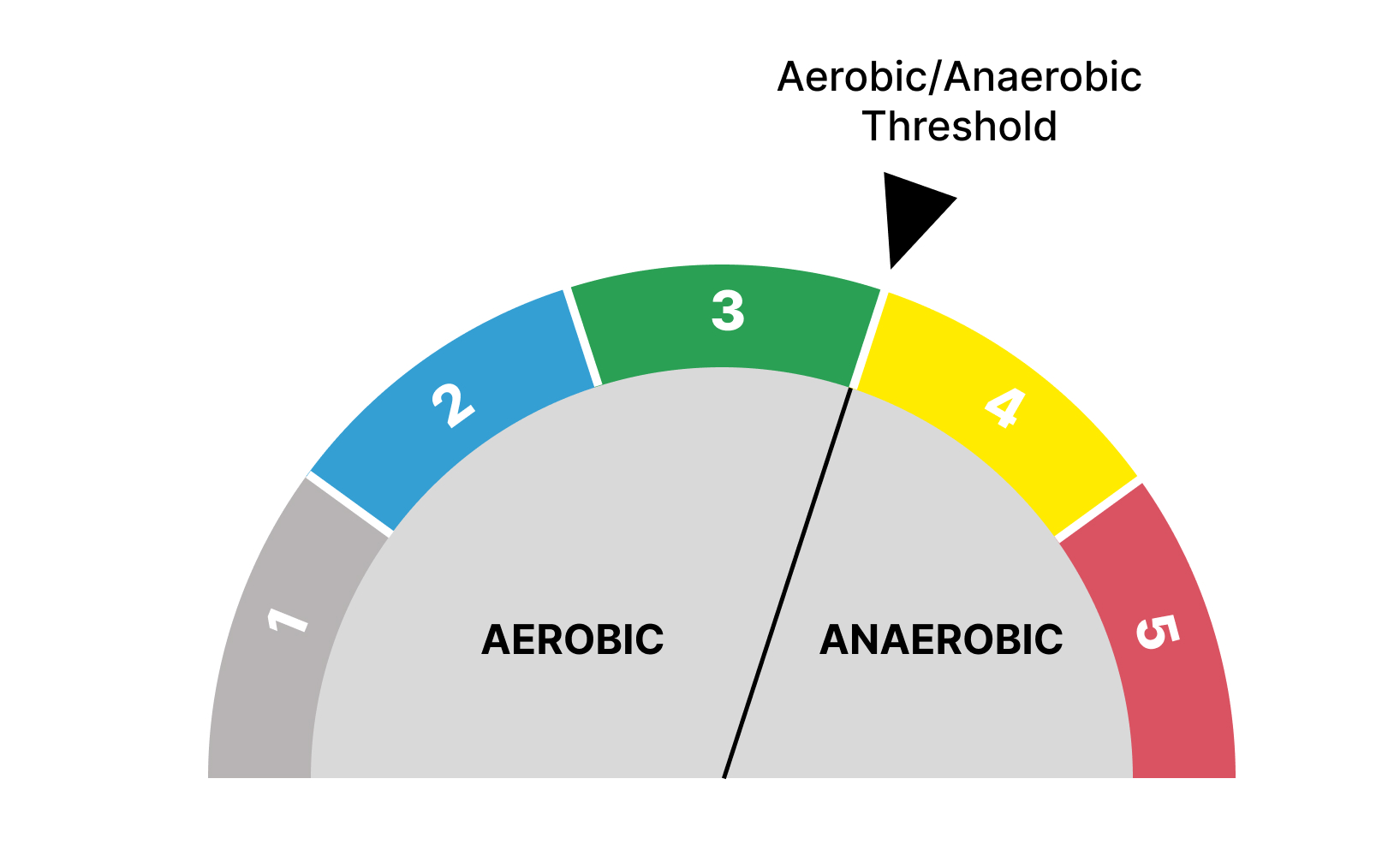
Racing
When you race long-course (Ironman 70.3 and Ironman), you need to tap into your Aerobic capacity. Your target power output is Zone 3 for the entire bike leg.
When you race short-course (Sprint and Olympic distances), you need to tap into your Anaerobic capacity. Your target power output is Zone 4 for the entire bike leg.
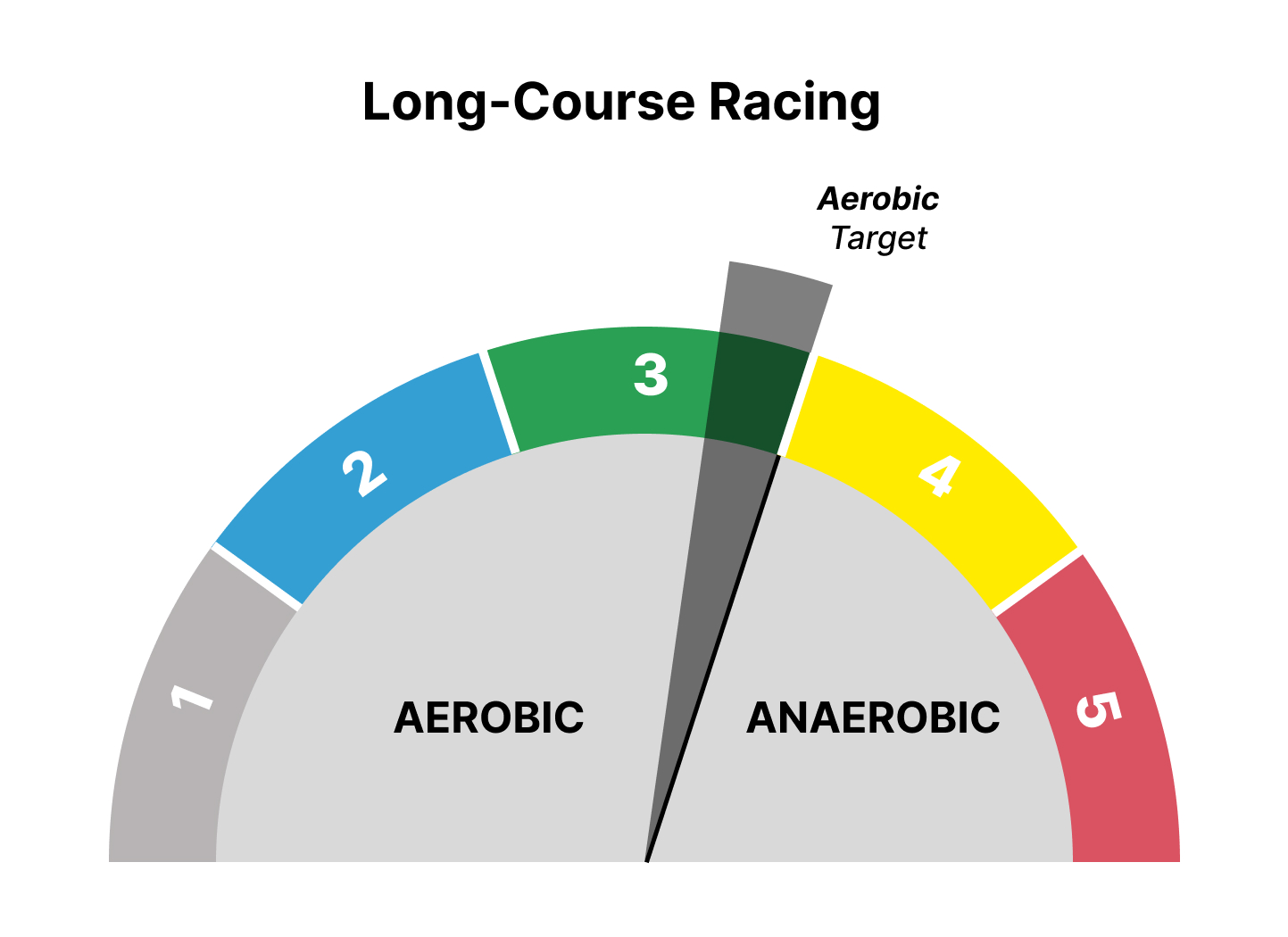
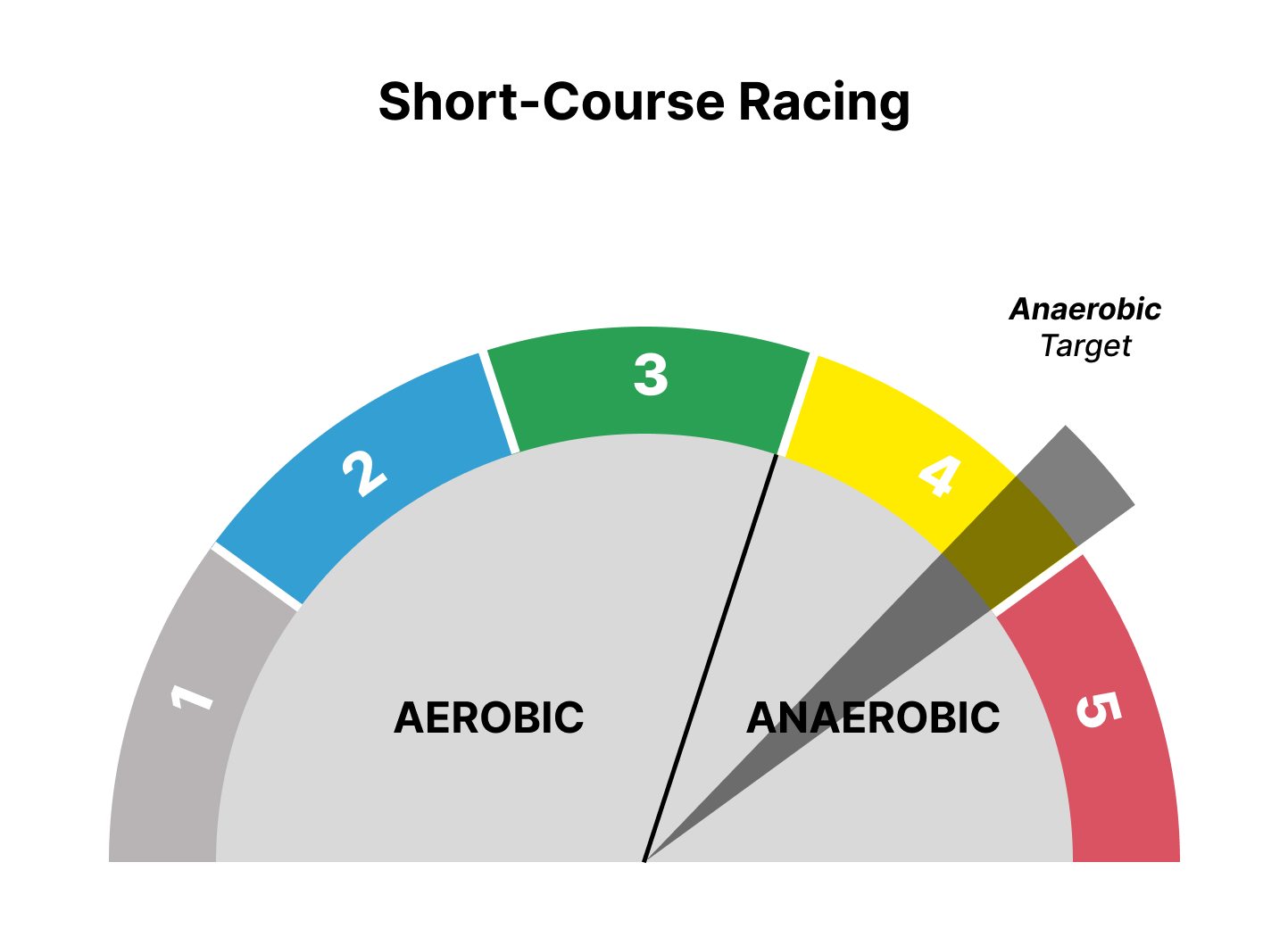
Data Tracking
In each training session, if you look around the room you’ll notice athletes are wearing a performance watch on their wrist AND heart-rate monitor on their chest. At a base level, they are helpful because you can not only record your workout, but you can understand your heart rate, what zones you’re training in, and your aerobic and anaerobic thresholds.
In future Guides, we’ll dive into how to most effectively use performance watches and devices. For now, just know that real-time tracking and heart rate data are critical parts of understanding how effective you are at each moment in your training.
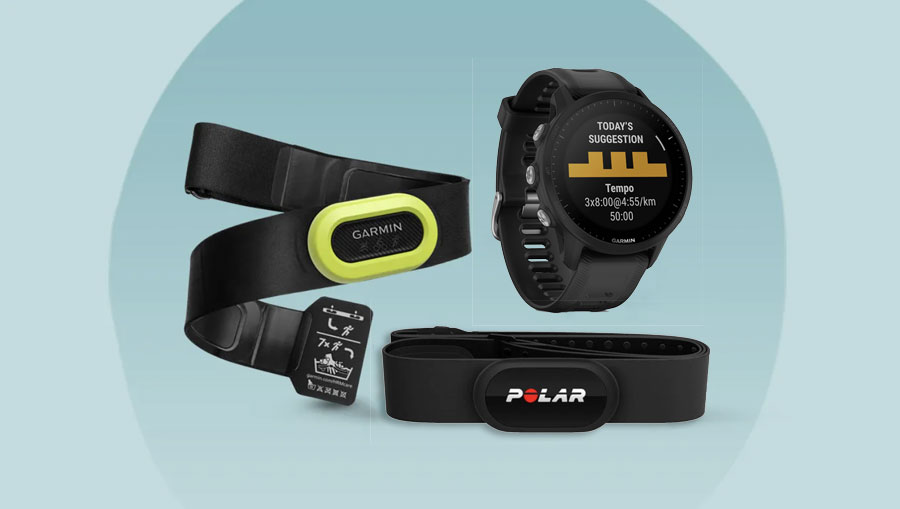
Our team preference for performance watches is the Forerunner 745 for short-course athletes, or Forerunner 945 for long-course athletes, and the Garmin HRM-PRO Heart Rate Monitor that goes around your chest. The only difference between the two watches is that the 945 has a longer battery life than the 745 for withstanding 10+ hour Ironman distance races.
